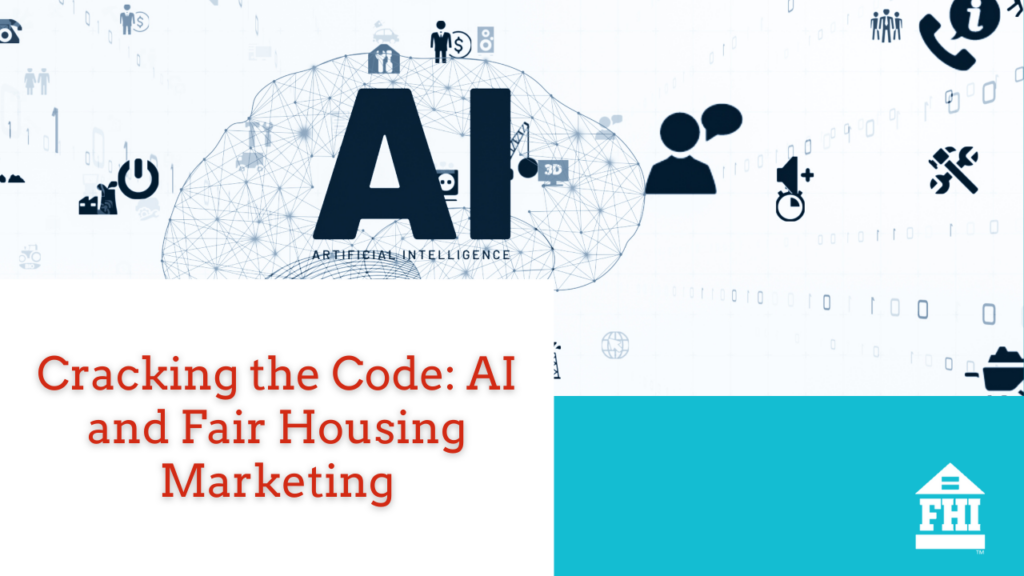In a rapidly evolving digital landscape, artificial intelligence (AI) is transforming the way companies market housing. While this technology offers efficiency and scalability, it also presents new challenges, particularly when it comes to complying with the Fair Housing Act. A recent notice from HUD (Department of Housing and Urban Development) addresses how AI-driven advertising can unintentionally lead to discriminatory practices.
HUD’s guidance emphasizes the potential for AI to contribute to housing discrimination in the marketing of both single and multifamily housing. This can affect not only the sale and rental of properties but also related services such as property management. The notice underlines how AI when used improperly, can result in unintentional biases that limit access to housing for certain protected groups. This article will discuss these dangers as well as offer tips on how to integrate AI in fair housing marketing successfully.

Table of Contents
Key Concerns in AI-Powered Marketing
The Fair Housing Act prohibits any form of discriminatory advertising, and this includes the unintentional exclusion of certain demographics from viewing housing ads. According to HUD, advertisers and the platforms they use to deliver these ads are both responsible for ensuring compliance with fair housing laws. This means that housing providers and property management companies must be vigilant about how their ads are created and presented to potential renters or buyers.
One of the most significant concerns highlighted in the HUD notice is the use of audience-targeting tools in digital advertising platforms. AI algorithms can preselect audiences based on factors such as gender, age, income, or geographic location. However, these seemingly neutral criteria may overlap with protected categories, resulting in unintentional discrimination. HUD refers to this as the use of “proxies,” where a neutral category can act as a stand-in for a protected characteristic, leading to biased advertising outcomes.
Example of Unintentional Discrimination
An example of how AI might create discriminatory advertising involves targeting different communities with varying messaging. For instance, if a housing provider markets properties in minority-majority areas with disclaimers such as “no criminal records” or “good credit only,” but omits these disclaimers in predominantly white areas, this could create an unfair and discriminatory barrier. Even if these differences in messaging were generated by AI rather than intentionally by the advertiser, the outcome could still violate fair housing laws.
HUD’s notice urges housing professionals to understand that these biases may not be intentional. Instead, they are often the result of how AI systems are programmed to optimize advertising outcomes. Nevertheless, ignorance of these issues does not excuse non-compliance. It’s crucial for companies to actively ensure that their AI tools do not lead to exclusionary advertising practices.
Steps to Ensure Fair Housing Compliance in Marketing
Given the complexity of AI-powered advertising, housing providers should take proactive steps to ensure compliance with fair housing standards. Here are four key recommendations:
1. Research and Due Diligence: Before adopting any digital advertising platform, it’s essential to understand how the platform’s AI systems work. Review HUD’s guidance and ask your ad platform provider about their approach to addressing fair housing concerns.
2. Advertiser Identification: Clearly identify your company as a housing provider when setting up advertising campaigns. This will help ensure that any built-in fair housing modifications in the platform are applied to your ads.
3. Use of Audience Data: Be cautious when using audience targeting tools. Ensure that none of the selected categories directly or indirectly involve protected characteristics such as race, gender, or familial status.
4. Monitor Outcomes: After launching a campaign, review the results to identify any potential discriminatory effects. If any unintended biases appear, make immediate adjustments to your campaign to correct them.
Staying Ahead of AI’s Impact on Housing
As AI continues to play a more prominent role in housing advertisements, it’s essential for property management companies and housing professionals to stay informed about the latest developments. HUD’s guidance reminds us that compliance with fair housing laws is not optional, even in the face of technological innovation. By following best practices and remaining vigilant, housing professionals can harness the benefits of AI while ensuring that their marketing remains inclusive and non-discriminatory.
As technology advances, so too must our understanding of how it can inadvertently affect fair housing. Staying informed and adjusting marketing strategies accordingly will help ensure that housing opportunities remain fair and accessible to everyone.
You may also like:
